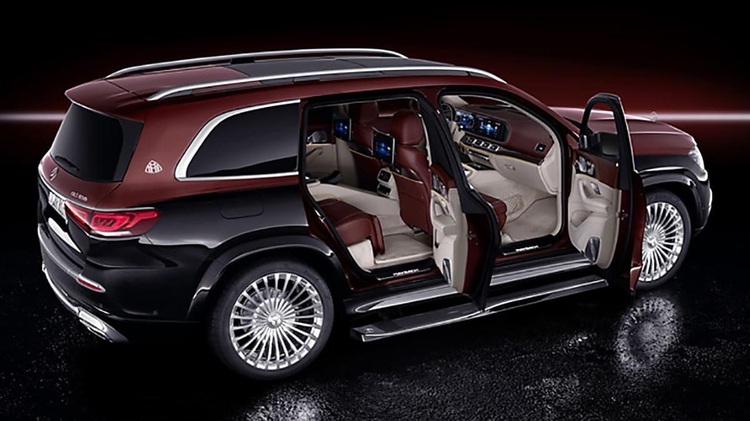Score Luxury SUV Deals: Find Value in Premium SUVs
Explore practical strategies to land attractive deals on luxury SUVs and near-luxury alternatives. This guide highlights market trends, incentives, and top models—like the Hyundai Palisade Calligraphy and Genesis GV80—while covering leasing, certified pre-owned options, financing, and total ownership costs to help buyers secure real value when shopping premium SUVs.

Comparing luxury SUV value propositions
The cachet of a luxury badge still matters, but many shoppers are finding comparable comfort and technology from upscale trims offered by mainstream brands. Models such as the Hyundai Palisade in its Calligraphy specification pack features that once defined premium marques—think Nappa leather, advanced driver aids, and elegant cabin finishes—often at a lower price point. These near-luxury options provide many of the creature comforts buyers expect from a luxury SUV while delivering a stronger value proposition when sticker price and long-term ownership costs are considered.
Beyond trim sheets and material choices, buyers should weigh functional luxury—things that improve the driving and ownership experience: high-quality seats, intuitive infotainment, robust safety systems, and thoughtful storage and convenience features. When mainstream manufacturers include these elements, the gap between established prestige brands and premium mainstream models narrows considerably.
Market trends affecting luxury SUV pricing
Macro factors and shifting buyer preferences are reshaping how luxury SUVs are priced and marketed. Economic cycles, inventory levels, and interest-rate environments all influence incentives and dealer pricing. Automakers often respond to slower demand with targeted promotions: lease specials, cash incentives, step-up financing, or extended warranties to preserve market share.
Consumers who track these cycles can find windows of opportunity. End-of-model-year clearances, holiday sales events, and inventory-orientated markdowns are common times to negotiate. Conversely, low-inventory periods for popular models can reduce negotiating leverage, pushing buyers toward near-luxury alternatives where supply may be healthier.
Leasing remains a popular route into luxury SUVs, offering lower monthly payments and the flexibility to upgrade frequently. However, prospective lessees should compare mileage allowances, money factors, and residual values across brands and dealers to determine true cost.
Current luxury SUV market offerings
| Model | Starting MSRP | Key Luxury Features |
|---|---|---|
| Hyundai Palisade Calligraphy | $48,900 | Nappa leather, HUD, 12.3” digital cluster |
| Genesis GV80 | $55,550 | 14.5” display, Remote Smart Parking |
| BMW X7 | $77,850 | Air suspension, 4-zone climate control |
| Mercedes-Benz GLS | $81,800 | E-Active Body Control, MBUX system |
Prices, rates, or cost estimates mentioned in this article are based on the latest available information but may change over time. Independent research is advised before making financial decisions.
Finding the best luxury SUV deals
Approaching a purchase with a plan improves the odds of securing a favorable deal. Consider these tactics:
- Research end-of-model-year clearance events and dealer holdback timings.
- Compare lease specials across multiple dealerships and read the fine print for fees and mileage limits.
- Explore certified pre-owned (CPO) programs to get near-new vehicles with manufacturer backing and extended warranties.
- Monitor manufacturer incentive programs, cashback offers, and regional rebates that can meaningfully reduce cost.
- Evaluate near-luxury choices like the Palisade Calligraphy, which can deliver many premium features for significantly less money.
- Negotiate from a place of knowledge: know invoice estimates, current incentives, and competing offers.
Timing a purchase can also help: promotions often cluster around the end of quarters, calendar-year clearances, and major shopping holidays. If you’re flexible on color or specific options, dealers may be more willing to discount inventory that’s harder to move.
Maximizing value in luxury SUV purchases
The sticker price is only part of the ownership equation. To judge real value, calculate total cost of ownership: maintenance, insurance, fuel, and depreciation. Luxury brands can command higher repair and service rates, though some mainstream premium trims include generous warranty coverage that offsets early ownership costs.
Key considerations:
- Warranty and maintenance plans: Longer factory coverage can reduce out-of-pocket expenses early in ownership and improve resale value.
- Reliability ratings and repair costs: Check third-party reliability surveys and typical service costs for the model you’re considering.
- Depreciation: Luxury vehicles can depreciate faster than mainstream models; near-luxury SUVs sometimes retain value better relative to their lower initial cost.
- Insurance and fuel: Premium SUVs often carry higher insurance premiums; be sure to get quotes before you buy.
For many buyers, the smart balance is between features and ownership economics. If advanced infotainment, high-end materials, and safety tech are priorities, near-luxury trims provide many of those benefits without the full premium associated with prestige badges.
Making the right choice for your family
Ultimately, the best luxury SUV is the one that meets your needs across comfort, technology, and budget. Whether you opt for an established luxury marque like BMW or Mercedes-Benz or choose a well-equipped near-luxury offering such as the Hyundai Palisade Calligraphy or Genesis GV80, informed shopping will uncover opportunities to reduce cost while preserving the premium experience.
Shop with a checklist: prioritize must-have features, compare total ownership costs, and leverage timing and incentives to improve your deal. With careful research and strategy, you can enjoy the benefits of a modern luxury SUV without overpaying for a brand name alone.





